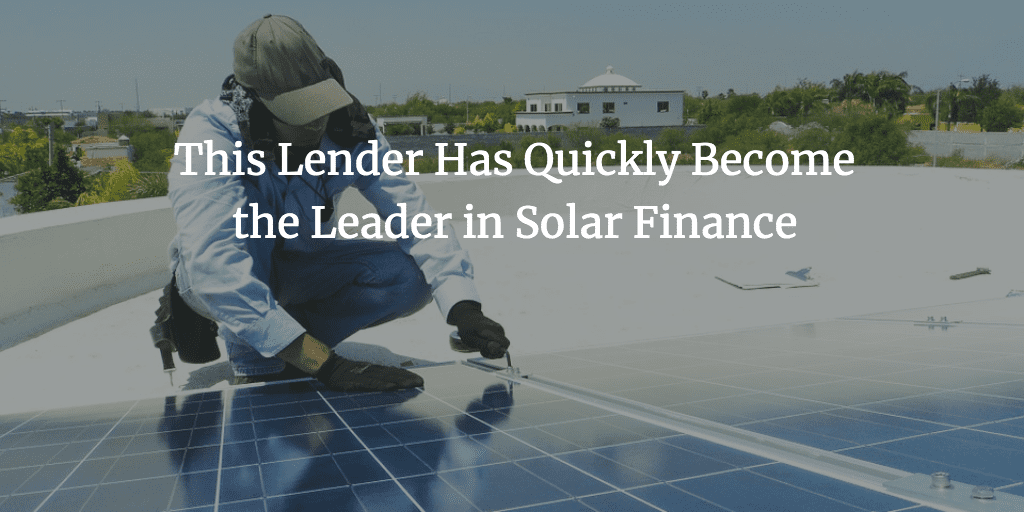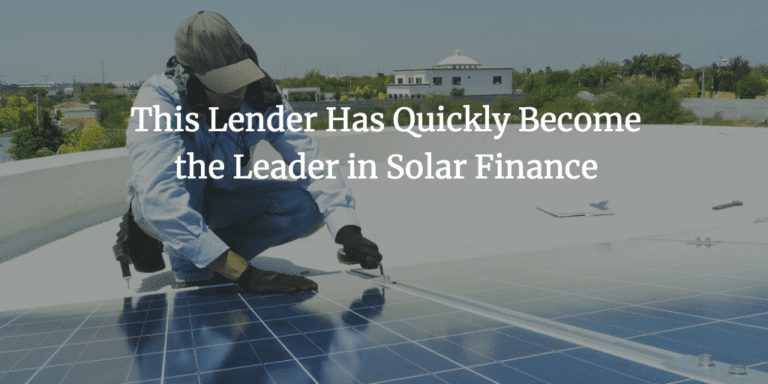
When we hear of fintech companies that achieve significant scale at a rapid rate they are often in the personal loan space or perhaps even larger dollar loans like mortgages. These are well established verticals which can be entered with relative ease and are in turn well understood assets from an investor perspective. We recently became aware of a company launched in early 2018 which is already lending $110 million per month in a market often ignored: solar.
I had the opportunity to talk to Hayes Barnard, the Founder and Executive Chairman at Loanpal to learn more about the business and what makes the solar industry so attractive. Barnard is no stranger to the solar market or even lending. Combined, the solar business and a mortgage business he founded in 2003 have lent over $27 billion. He leaned on his experience, which included being CRO at SolarCity (now Tesla) where he managed a team of 8,000, to tackle solar financing.
The impetus for starting the business was that financing needed to catch up in the solar business. One of the main challenges is getting banks and other investors to understand the asset class. He also sought out to understand why homeowners were disqualified for solar, which sometimes relates to unforeseen project obstacles like doing a main panel upgrade or doing rafter and roof work which are needed to get a home solar ready. He set out to create a financing company that has the ability to say “yes” more often and after a year of building the technology he created his fintech company all centered around his passion of what he likes to call “world-positive lending”.
Loanpal prides itself on providing instant decisioning, not just pre-approvals to their borrowers. Beyond focusing on improving the consumer experience and working on better underwriting, they had to build up two other sides of the business, one for their partners and the other for investors.
On the partner side, Loanpal works with 80% of the top 50 solar providers in the U.S. and works with 130 solar partners overall. They currently capture 21% of new residential solar loans making them a leader in this space. They spent time building integrations directly with contractors via APIs, through the tablet and programs that installers were already using. At the outset this results in a different customer experience where financing happens at the point of sale. Barnard noted that they are embedded into the process, similar to what Square does. Loanpal has also worked to make sure they work with their partners’ ERP systems to improve efficiency for larger scale organizations.
On the backend, Loanpal has built an investor portal which interacts with large institutional capital. It allows their investors, where they have forward flow agreements, such as Goldman Sachs and other banks to view a realtime rate of return. Loans are first funded by a warehouse line but are quickly sold off to investors in pools of loans. One thing that makes solar unique is that often these loans are eventually either rolled into a first mortgage by the homeowner or the homeowner ends up moving. While on the surface a solar loan might be a 15 year term, investors are actually turning over their capital much quicker and capturing a dealer fee, increasing the rate of return. Loanpal now has a significant amount of data on the assets which has helped educate investors and ultimately driven down the cost of capital.
So where does Loanpal go from here? Bernard has ambitions to originate several billion in loans to further the solar cause which is certainly achievable given solar only has 2% penetration across the US. The demand and interest in solar is increasing and consumers, especially those in the millennial generation want to do the right thing and use clean energy. Folks who have previously been ready to move to solar now have the choice to make the move with the help of financing. This coupled with the decreasing costs of solar and some of the positive conversations happening with local utilities and state governments will only help move us forward. A perfect example of this is the recent news of California requiring solar panels on all new construction.
Beyond solar, Barnard is trying to tackle other areas that fall into creating a conduit to doing world positive banking. He hinted at some things they are thinking about related to new ways to unlock capital for homeowners, which might include things like converting outdated homes to smart homes, expanding into a variety of products and solutions such as energy efficient HVAC, roofing, etc. Ultimately the goal of the company is to lower our carbon footprint.


